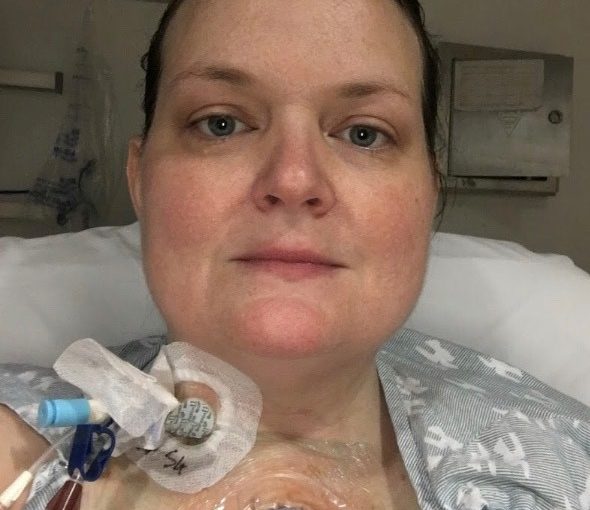Linda Jara was 42 years old in 2014 when she went into major heart failure.
It was Christmas eve in 2014 and Linda had been suffering from a belligerent sinus infection. As a teacher typically does, she pushed on – not wanting to interrupt the instruction of her students or the routine of daily life. But on Christmas Eve her breathing just became too labored and she took herself to the hospital.
According to the American Heart Association, a healthy injection fraction can range between 50% to 75%, a borderline ejection fraction can range between 41% and 50%. Linda’s injection fraction was at a 30% and her heart rate was at 150 beats per minute. Filled with over 10 lbs. of access fluid, Linda was in major respiratory failure!
Linda received an LVAD (left ventricular assist device) which is essentially an electromechanical device for assisting cardiac circulation, which is used either to partially or to completely replace the function of a failing heart.
Linda was diagnosed with idiopathic dilated cardiomyopathy and it was discovered that she had an enlarged heart that was shaped like a round basketball, as opposed to a traditional heart which is shaped like a football. This was not a genetic condition, although both of her parents did have a history of heart disease, but there was no way to repair her heart and she was put on a transplant list.
After nearly a year and a half of waiting for a heart, and several unviable matches that proved to be “false alarms,” Linda received a heart transplant in September of 2016. Linda remained in the hospital for 4 weeks after her transplant, giving her body a chance to adjust and accept its new organ. While she did experience some rejection, ultimately her body adapted and accepted her new heart.
Linda’s recovery was not easy. She persevered and powered through cardiac rehab, a key component to recovering from such an invasive and life changing procedure.
Linda never did go back to teaching, as she really needs to manage her energy levels and maintain a stress-free life. She currently takes upwards of 30 medications, some of which she will remain on for the rest of her life.
Linda is grateful to the doctors at Temple University and to organizations like the American Heart Association for continuing to innovate cardiac procedures like the lifesaving one she received several years ago.
